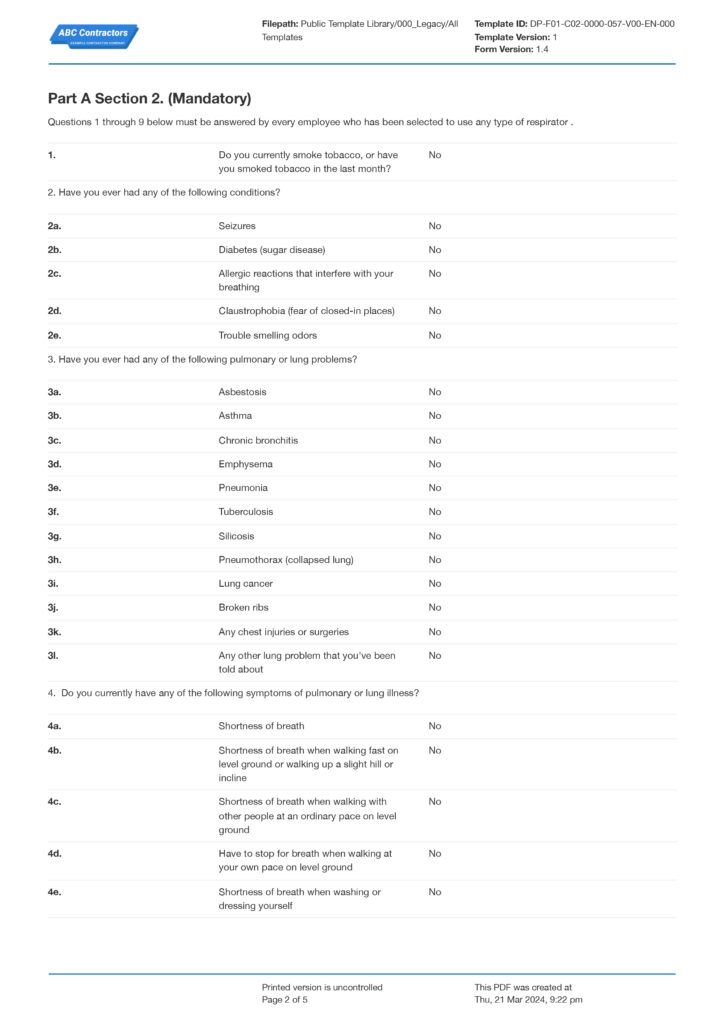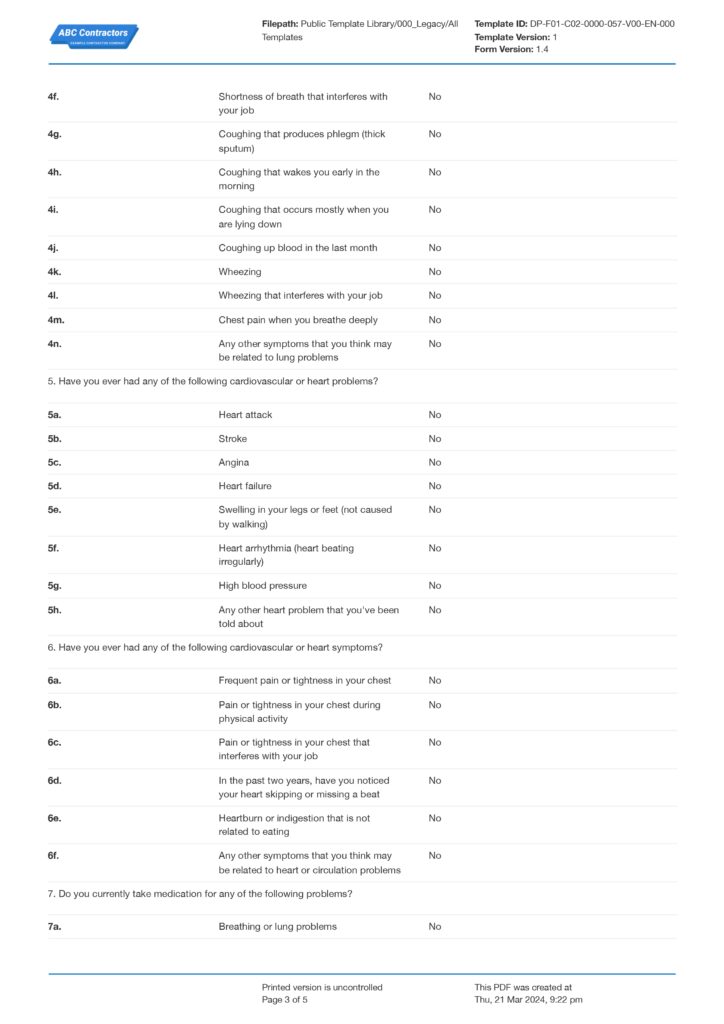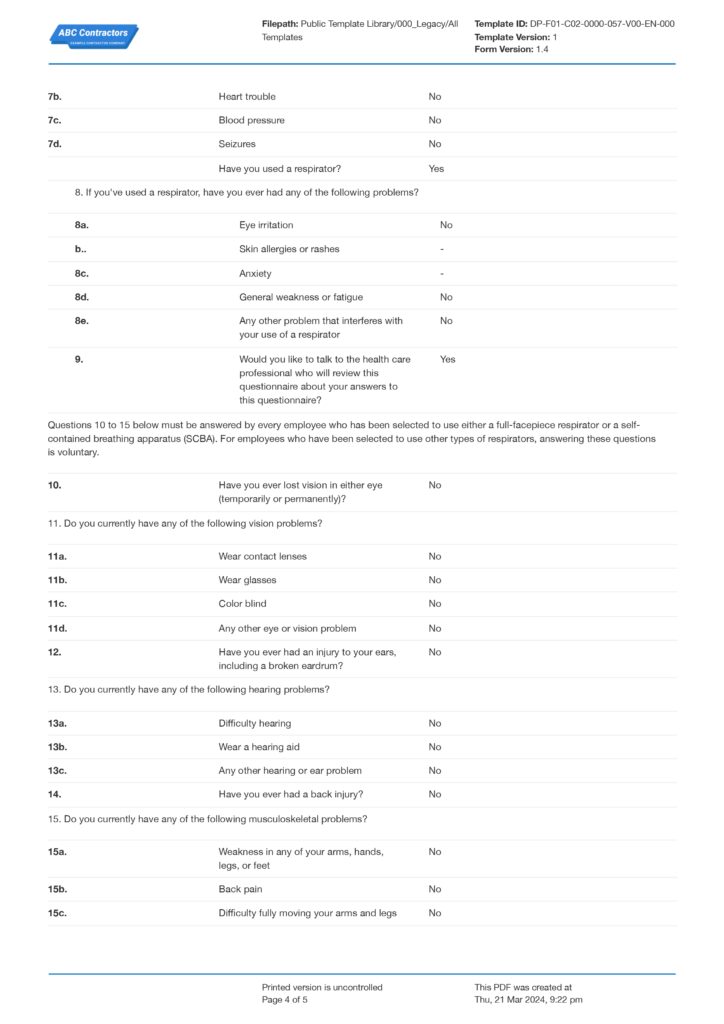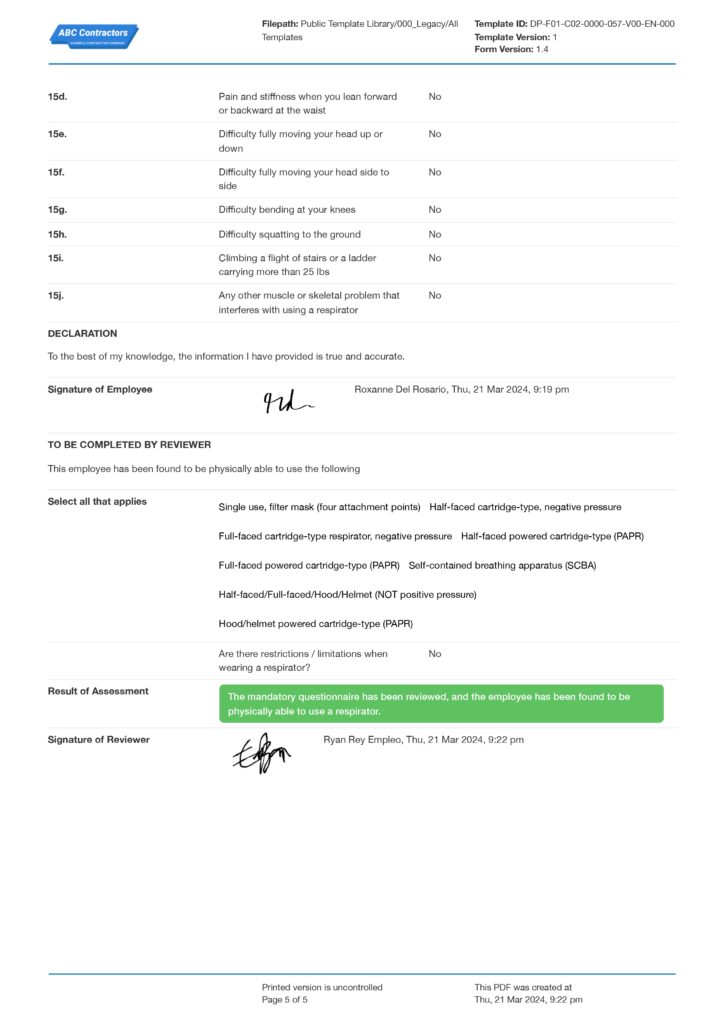Dashpivot Article – OSHA Respirator Medical Evaluation Requirements

OSHA Respirator Medical Evaluation Requirements
Why Does the OSHA Have Respirator Medical Evaluation Requirements?
The primary goal of the Occupational Safety and Health Administration's (OSHA) respirator medical evaluation requirements is to ensure that employees who use respirators are medically fit to wear them without risking their health. These requirements are a fundamental component of the respiratory protection standard that OSHA enforces, which is designed to safeguard workers from airborne contaminants that could cause serious health problems.
The necessity for these medical evaluations stems from the fact that respirators, although protective, can impose physical strain on a wearer. The evaluation process checks for any medical conditions that could be exacerbated by respirator use, ensuring the safety and well-being of employees while they perform their duties. This is crucial in work environments where toxic substances, such as gases, vapors, and particulate pollutants, are present.
Compliance with the OSHA respirator medical evaluation requirements serves as a legal obligation and also as a critical safety procedure. It helps prevent complications related to inadequate oxygen levels, excessive respiratory exertion, and other medical issues that can arise from improper respirator use. By adhering to these standards, employers uphold a safe working environment as well as ensure that safety measures are personalized to accommodate individual health profiles. This personalized approach is essential because it accounts for the varying susceptibilities among workers, which can differ significantly based on their medical histories and the specific conditions of their workplaces.
These regulations are particularly pertinent in settings that involve extensive physical labor or exposure to harmful substances, typical of the sectors like manufacturing and construction. The medical evaluations are designed to confirm that each respirator wearer’s health will not be compromised, thereby supporting these industries’ operational efficiencies and safety standards.
What Are OSHA Respirator Medical Evaluation Requirements?
OSHA respirator medical evaluation requirements are designed to ensure that employees who are required to wear respirators are medically capable of doing so without risking their health. These regulations are specified under the OSHA standard 29 CFR 1910.134, which covers the use of respirators to protect workers from harmful dusts, fogs, fumes, mists, gases, smokes, sprays, and vapors.
The requirements apply to all employees who must wear respirators in their workplaces. This includes both full-time and part-time workers across sectors that involve exposure to respiratory hazards. The types of respirators requiring medical evaluations include, but are not limited to, N, R, or P disposable respirators, half-facepiece or full-facepiece respirators, powered-air purifying respirators (PAPRs), and self-contained breathing apparatus (SCBA).
The Medical Evaluation Process
The medical evaluation process typically begins with the employee completing a standardised OSHA respirator medical evaluation questionnaire. This form requires employees to enter their personal details, the specific type of respirator they will use, and comprehensive health information. Key entries include:
- Personal identification and contact information.
- Details about the respirator type (e.g., PAPR, SCBA).
- Medical history focusing on respiratory, cardiovascular, and neurological health.
- Current health status, including any symptoms related to lung or heart conditions.
The purpose of this form is to collect essential health data in a structured format, which a licensed healthcare professional (PLHCP) will review to assess the employee's medical fitness for wearing a respirator.
Steps in the Medical Evaluation Process
- Questionnaire Completion: The worker fills out the questionnaire during normal working hours, providing detailed information on their medical history and any current health issues that might affect respirator use.
- Healthcare Professional Review: The PLHCP reviews the questionnaire to determine if the worker is medically fit to use a respirator or if further evaluation is necessary.
- Additional Testing: If required, further tests such as a pulmonary function test or a physical examination may be conducted to more accurately assess the worker’s health in relation to respirator use.
- Professional Recommendation: Based on the questionnaire and any additional tests, the healthcare professional will recommend whether the worker is medically cleared to use the respirator and may suggest modifications or restrictions based on health needs.
Criteria for Respirator Fit and Suitability
The criteria used to determine respirator fit and suitability include:
- Physiological Capability: Assessing the employee’s overall physical health to ensure they can perform work duties while wearing a respirator without experiencing significant physical distress.
- Respirator Type Suitability: Matching the type of respirator to the job tasks and the specific hazards involved, as well as to the worker's facial structure to ensure a proper seal and effective protection.
- Health Risks from Respirator Use: Evaluating whether the use of a respirator could exacerbate any pre-existing health conditions, such as cardiovascular or pulmonary diseases.
Role of Healthcare Professionals
Healthcare professionals play a crucial role in this process. They are responsible for:
- Evaluating Questionnaire Responses: Interpreting the medical data provided by the employees to identify any health issues that might complicate respirator use.
- Conducting Physical Examinations: Administering physical exams as needed to verify the health status and capability of the worker to safely use a respirator.
- Certification of Suitability: Providing a medical determination on the worker’s suitability for respirator use, which may include recommendations for specific types of respirators or restrictions on use.
Below is an example of a OSHA respirator medical evaluation questionnaire that has been completed and signed-off by the employee and then certified and approved by the reviewer (the PLHCP):

Comply with OSHA respirator medical evaluation requirements using standardised questionnaire forms
Use questionnaire forms to address OSHA respirator medical evaluation requirements
The preceding OSHA respirator medical evaluation questionnaire form was completed using a OSHA respirator medical evaluation questionnaire form template. Consider using it for your next evaluation, it has a range of features that help the completion of the process:
- Comprehensive Health Assessment: Covers a wide range of health issues, including respiratory, cardiovascular, and neurological conditions.
- Structured Questionnaire Format:
- Part A, Section 1: Gathers essential personal and basic health data.
- Part A, Section 2: Details specific health conditions affecting respirator use.
- Mandatory and Voluntary Sections: Differentiates between essential questions for all and additional sections for specific respirator types.
- Privacy and Confidentiality: Ensures employer or supervisor does not view answers, protecting employee's personal health information.
- Ease of Use:
- Clear Instructions: Each section includes detailed instructions for accurate completion.
- Organized Health Questions: Facilitates understanding and review.
- Direct Communication Channel:
- Provides space for indicating best contact times and a section to request discussions with the healthcare professional.
- Legal and Regulatory Compliance:
- Helps comply with OSHA Standard 29 CFR 1910.134.
- Includes employee and healthcare professional signatures to formalize the evaluation.
- Versatility in Respirator Types:
- Allows specification of various respirator types, ensuring evaluation covers all relevant needs.
- Diagnostic and Evaluation Support:
- Designed to flag potential risks from respirator use and support informed healthcare decisions.
Use digital solutions to further enhance your OSHA respirator medical evaluation questionnaires
Using standardised forms to complete OSHA respirator medical evaluation questionnaires allows for all the required information to be captured each time. However, individual forms can easily be lost or overlooked, especially if they have to be provided to external medical professionals before being returned to the worker.
This is why many modern companies now use an OSHA respirator medical evaluation questionnaire app to manage all their questionnaires. With an application, users can digitally create, complete, and access questionnaires using a desktop, mobile or tablet.
This allows workers to complete and submit their questionnaires while on-site. Employers can see the completion status of each questionnaire and which workers have had their evaluations completed. Medical professionals can provide approval by signing off on the form remotely rather than having to manually return it.
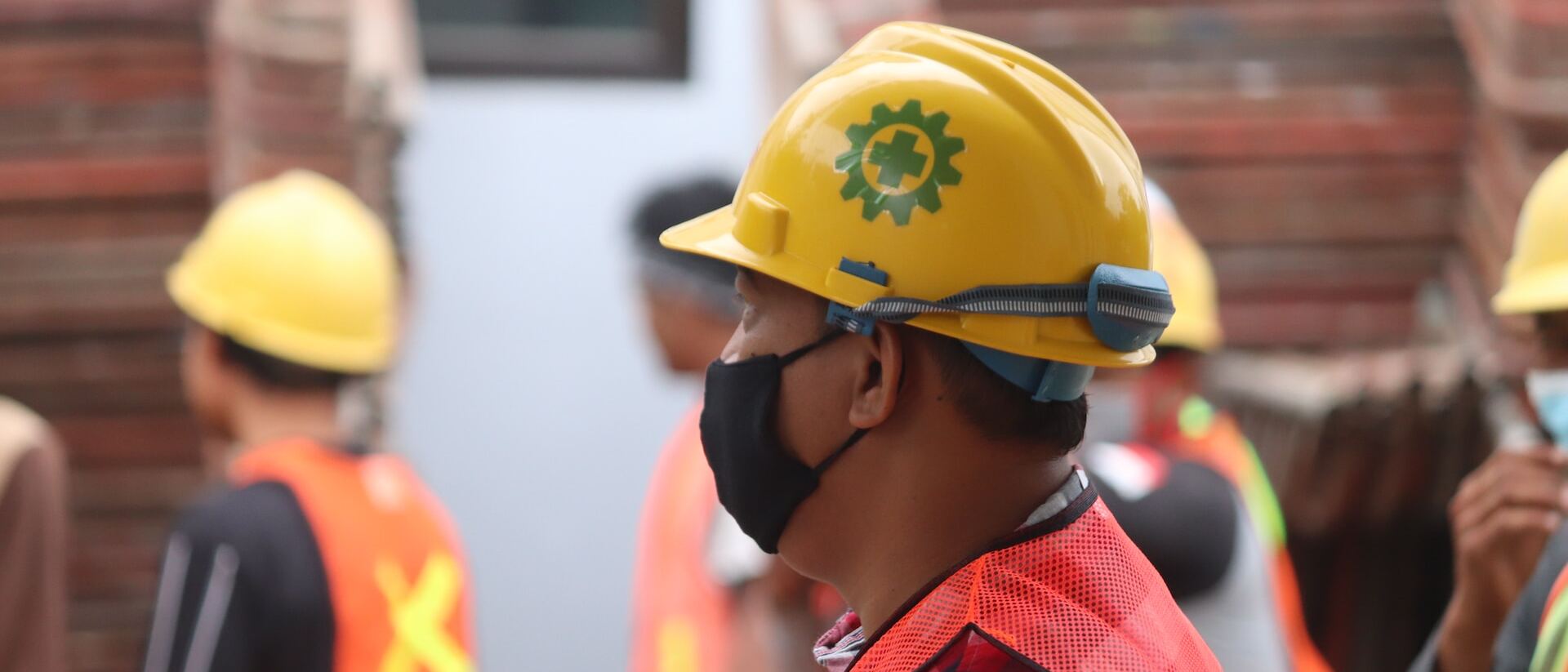
OSHA Job Hazard Analysis template
Ensure you're meeting OSHA regulations with the OSHA JHA template.

OSHA Incident Report form 301 template
Properly document your injury and illnesses on site with this OSHA Injury and Illness Incident Report form 301 template.

OSHA form 300 & 300a template
Maintain your log of injuries and illnesses and your 300a summary with this free template.

